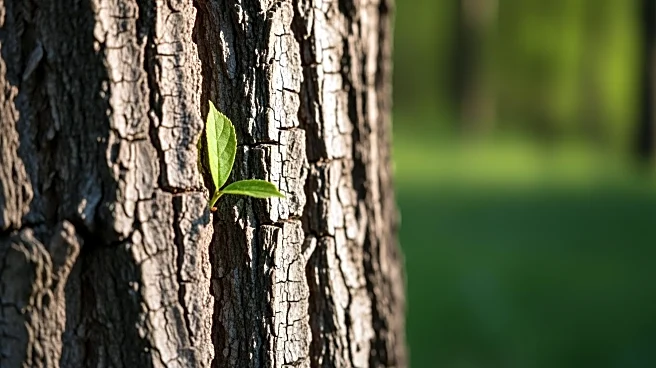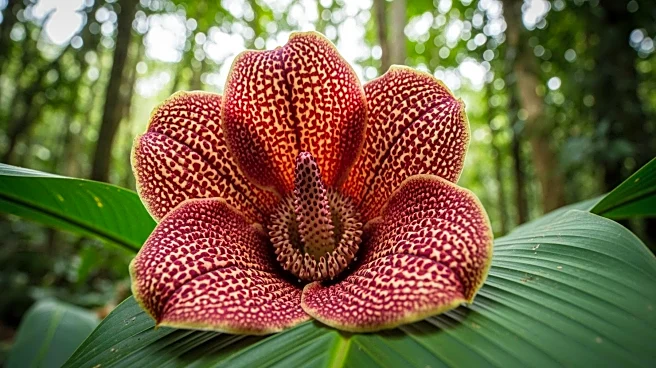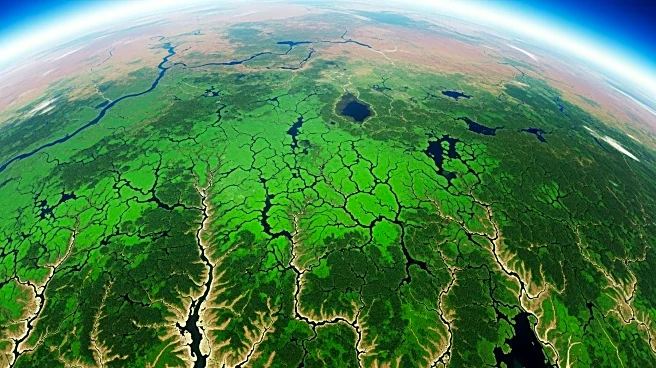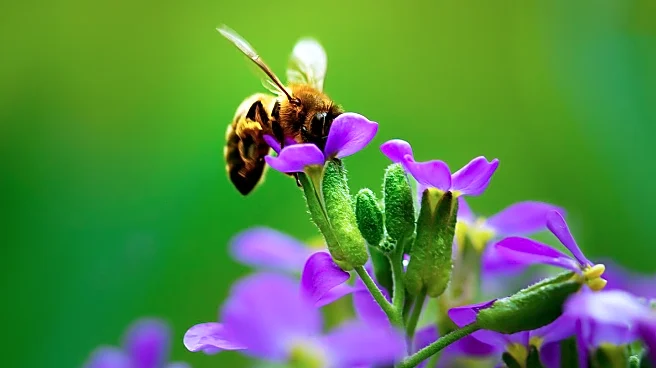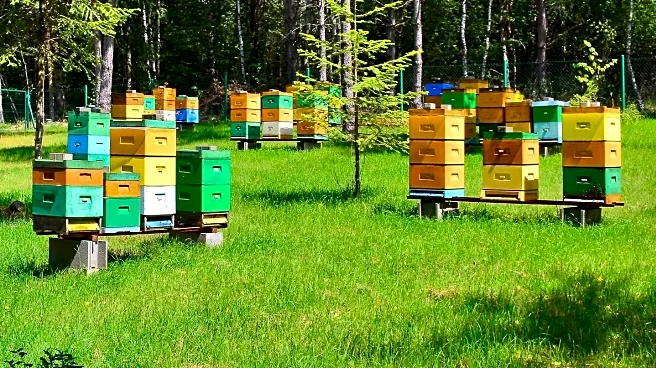What's Happening?
Scientists have discovered a new species of frog, Phrynopus manuelriosi, in Peru's Yanachaga-Chemillén National Park. The frog, named after conservationist Manuel Ríos, is notable for its large red eyes
and long fingers. It inhabits the unique 'elfin forest' ecosystem at high elevations, which provides a rich habitat for rare species. The discovery was made during a wildlife survey, and the frog's distinct features and coloration set it apart from other species in the region. Despite being found in a protected area, researchers are concerned about habitat destruction due to human activity.
Why It's Important?
The discovery of Phrynopus manuelriosi highlights the biodiversity of Peru's Andes Mountains and the ecological significance of the region. It underscores the importance of conservation efforts to protect unique ecosystems and the species that inhabit them. The frog's discovery adds to the understanding of amphibian diversity and the role these creatures play in their environment. Preserving the frog's habitat is crucial for maintaining biodiversity and preventing the loss of vulnerable species. The naming of the frog after Manuel Ríos emphasizes the impact of individual contributions to conservation and the need for continued efforts to protect natural heritage.
What's Next?
Further research is needed to understand the behavior and ecological role of Phrynopus manuelriosi within its habitat. Conservationists are focused on protecting the frog's environment from human-induced threats. Efforts to enforce park boundaries and prevent habitat destruction are essential for the frog's survival. The discovery may lead to increased awareness and support for conservation initiatives in the region. Researchers will continue to monitor the frog's population and assess the impact of environmental changes on its habitat.
Beyond the Headlines
The discovery of the Manuel Ríos' Andes frog highlights the broader issue of biodiversity conservation and the challenges faced by species in protected areas. It raises questions about the effectiveness of current conservation strategies and the need for stronger enforcement of environmental protections. The frog's unique features and adaptation to its environment serve as a reminder of the complexity and interconnectedness of ecosystems. The case emphasizes the importance of scientific research in informing conservation policies and the role of public awareness in driving change.


